
Last year, during a 4th of July event with my friends on Nicollet Island in Minneapolis, beneath a setting sun and amiss a gathering of people ready to watch the fireworks blaze the skies, I pondered over the issues I was having with my (yet unfinished) dark fantasy novel “Kingsritter”. … I knew that I needed to start a new project to get my mind untethered from it, and I mulled upon the idea of writing a novel in the fashion of a “Choose Your Own Adventure” fiction, like many of those I grew up with.
I ran this idea by my friends, and they seemed really interested in the idea. It was at this moment, as the first rockets flew that I would kick this new project into gear right away, and I started writing down notes.
...as many flashes of inspiration lit the skies above.
I was going to write an “interactive fiction” novel, and post it online for others to read and enjoy for free! I had just the idea on what it would be about!
Enter my project: “Mysteries of the Outrealm”.
(the name is subject to change, but for the time being, I’m linking this one!)
… And while it began as a simple novel idea, I soon realized getting further and further into the deep end that I was actually programming a “video game” (or an interactive speculative fiction novel with video game elements).
The Plot

Set to exist in the 1990’s, the novel opens with you,… our teenage – early 20’s protagonist, … as you step out of the cinema in the center of your small rural town. After parting with your friend, you notice from wayward sounds of thunder that a storm is coming, and you must find your way home.
Through various paths, you happen upon the abandoned manor at the top of the hill.. You recall several rumors from your friends; they all say it is haunted. You never believed in ghosts, but you avoided the hill anyhow. This time, however, you approach to find a relief from the rain, and decide to get a closer look.
In time, you stumble upon the manors terrible secret, staring down the mainframe of a central AI that dwells within the underbelly of the house. You enter a strange and alternate world, forced to survive one of four scenarios set before you (inspired by famous book genres).
What will you do to avoid your untimely death, in a place far from home? What secrets will you unravel upon your journey? Perhaps you will be the first to finally uncover, … the Mysteries of the Outrealm.
How does the “Interactive Novel” work?
For months, I knew I had to begin writing the pieces of the story, but realized that I wanted to provide that experience in a live, web environment for anyone on the internet to enjoy! In the very least, provide them a way to download it to their machine.
Then, I happened upon a platform known as Twine.
Twine is a tool developed for just this purpose; the creation of text passages which hyperlink to other passages, and can be used for an interactive novel. While some of its features are basic, it allows for ever increasing customizations to the look and feel of the novel. Given my experience in tech, and my budding interest in coding, I decided to experiment!
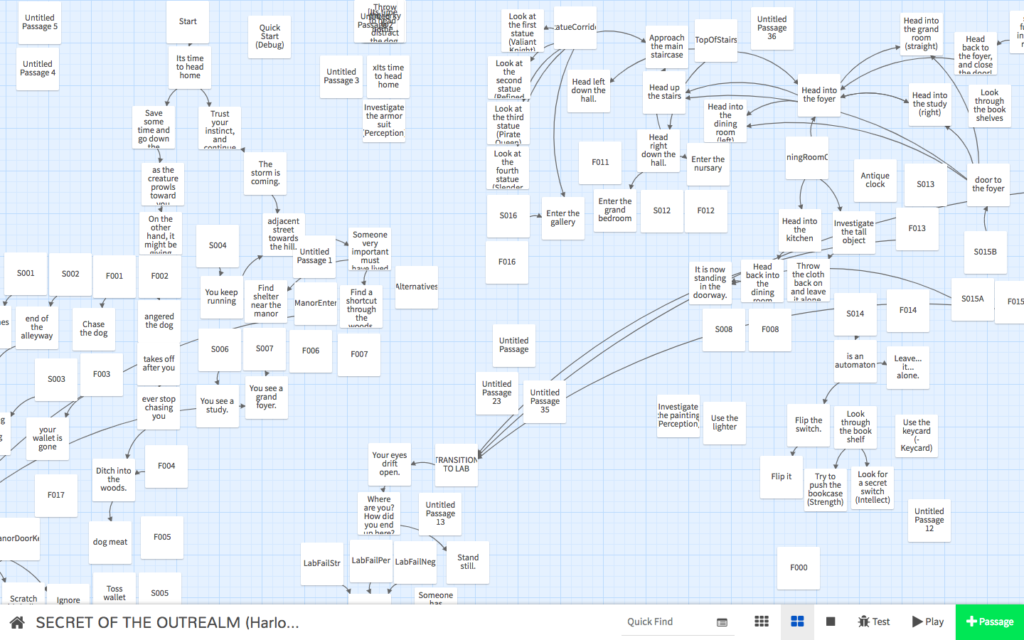
A little CSS here,…
…a little JavaScript there,
… a dash of HTML,
… and a lot of spare time!
The Core Mechanics
What came out the other side was an interactive novel which had multiple game-like mechanics:
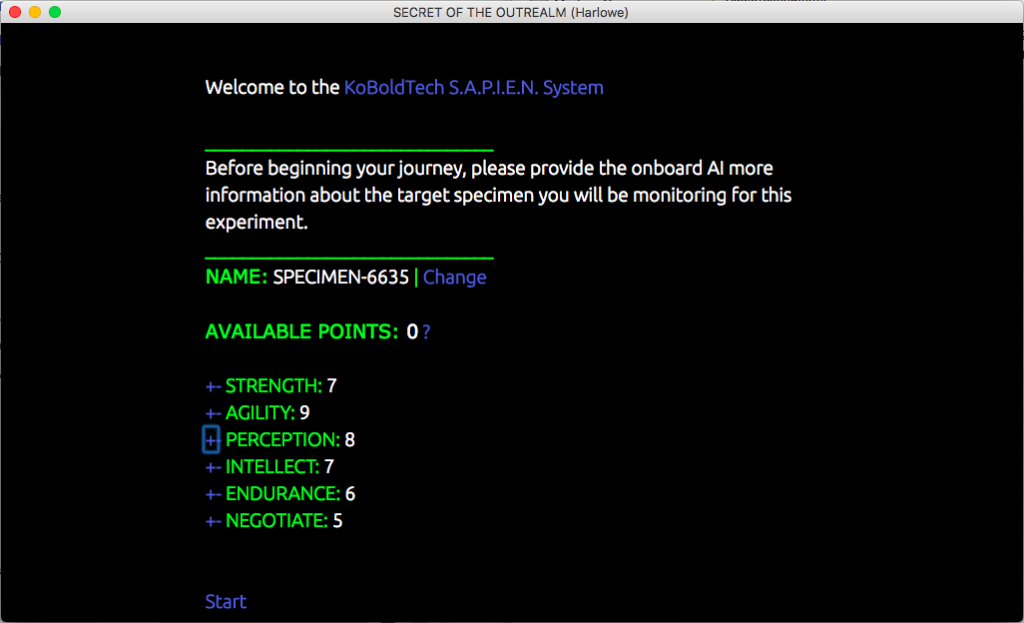
1. Character stat rolls. … Challenges are based upon a series of dice rolls and “character stats”, similar to a role-playing game. Throughout the story, the reader makes choices which requires some level of “Strength”, “Agility”, “Intellect” or other abilities

2. Basic inventory system. … Some choices require something more than just decision and rolling. To accomplish a goal, make a goal easier, or to uncover a narrative path previously undiscovered, you might require an “item” in your inventory. You discover those items by navigating specific paths in the story.
3. Save/Load system. … To return to a previous point in the story, you can choose to save at a specific passage, and then return to that passage if you discover the path you’ve embarked on is too treacherous, or if you want to re-read that section.
4. Sound, Effects, and Atmosphere. … During the novel, the readable text area shows formatting and colors which highlight phrases and flavor the story. Limited graphical elements, and audio immerse the reader into an experience which intensifies the weight of the narrative.
5. Evolving narrative. … If you take a specific path, or acquire a specific goal, you may see differences in the story provided. In addition, a few elements in the story are completely random, to provide the feel of a unique experience when navigated again.
While this has been designed as a digital media, located in one place on the internet, I also considered what it would take to write up book-pages, and provide some of the same elements in written format, in case I were to publish the story in hard-cover form. … Of course, this is secondary to writing the thing in its current form.
What inspired the story idea?
A project of this kind is something that attracts a number of genres, and inspirational sources.
Choose Your Own Adventure (CYOA) Novels
Most notably, I was inspired by the “Choose your Own Adventure” series of books which were available at my middle and high school libraries years ago. Each novel threw the reader into a brave new world filled with unique challenges, and even if you could not estimate what the results of your decision were, you were treated to a non-linear narrative which propelled you into many possibilities rather than just one.
One expected downside was how short it made the overall narrative.. You could certainly follow each and every branch, but some directions made you felt like you wanted to know more about what was possible. This would be something I would spend time expanding on in my own project.
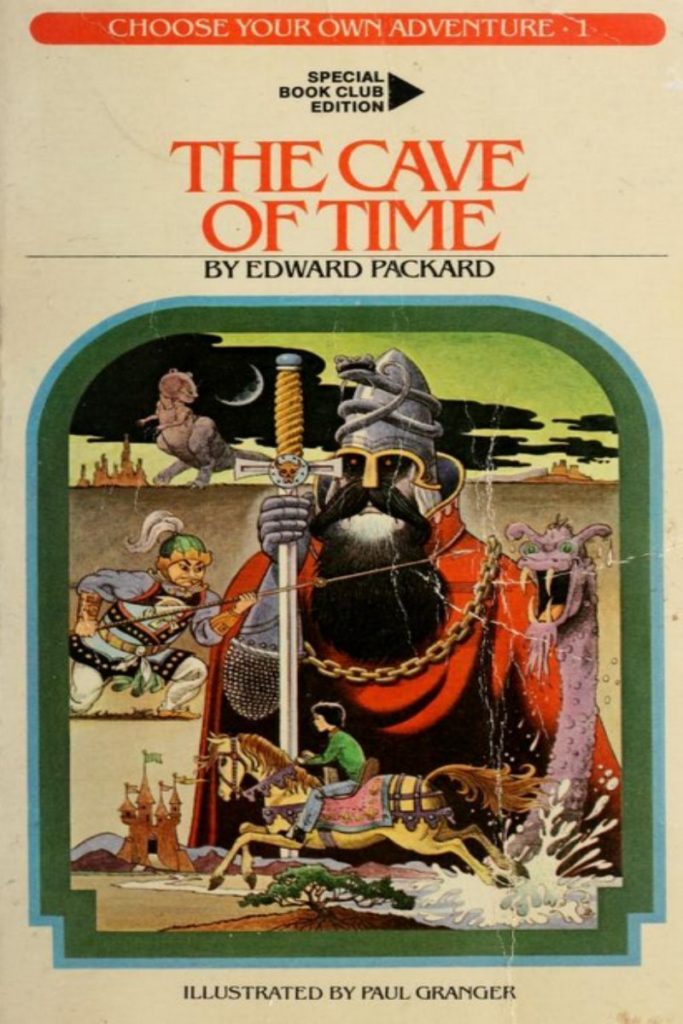
Dungeons and Dragons, and other roleplaying games.
As the story has randomized mechanics similar to a role-playing game, it was a goal of mine to make the experience feel a bit like Dungeons and Dragons, or similar tabletop game. DnD has been a part of my life for over a decade, and leveraging Twine’s logic system gave me the power to infuse that into the novel.
A long forgotten (and underrated) Nintendo game.
Additionally, I was an avid SNES gamer in the 90’s, and one of my favorite games was an underrated, but gritty urban sci-fi game “Secret of Evermore”. A SquareSoft title which was a caricature of old-sci-fi stories compressed into an outer-world traveling epic involving multiple regions inspired by multiple eras of time. I decided to focus on it as story inspiration to give it a very familiar starting point. Beyond the start, the story is vastly different.
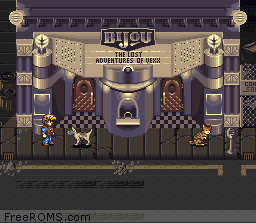
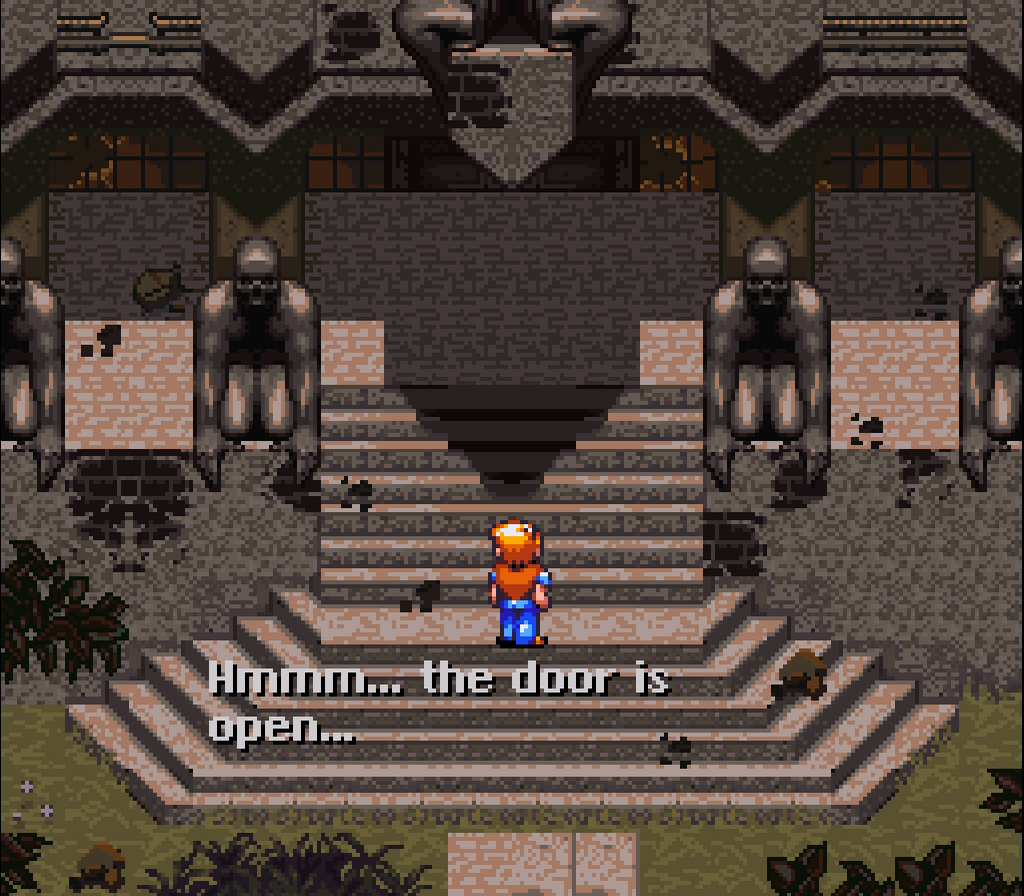
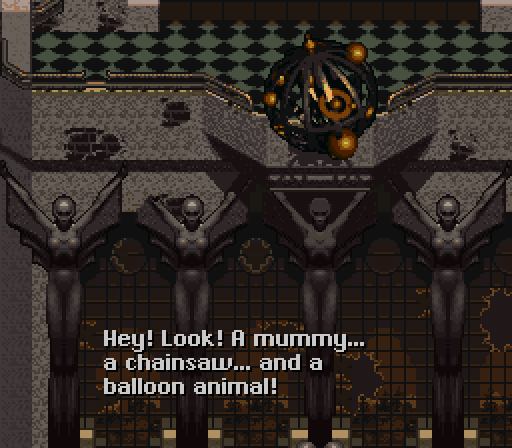
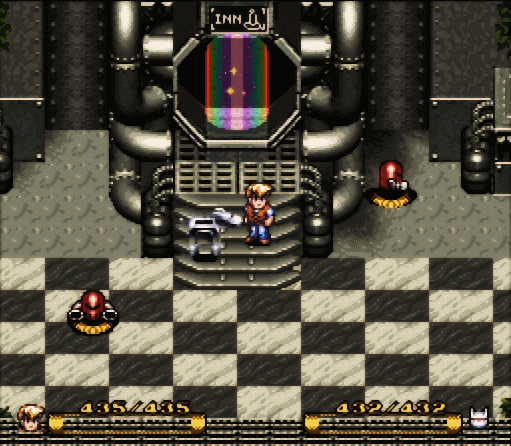
... and several different genres of books
In my journey as a reader and writer, I wanted to experiment with multiple genres of horror. This gave the the idea of how to represent the multiple options the character gets to choose from.
The four scenarios are based upon the following:
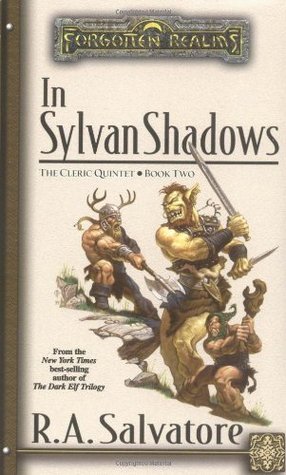
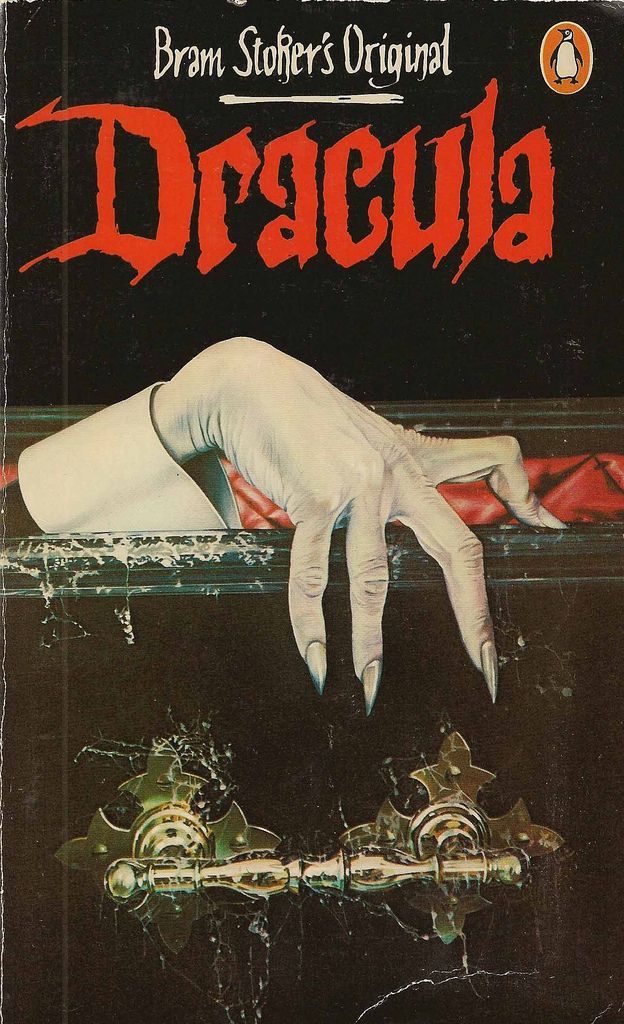
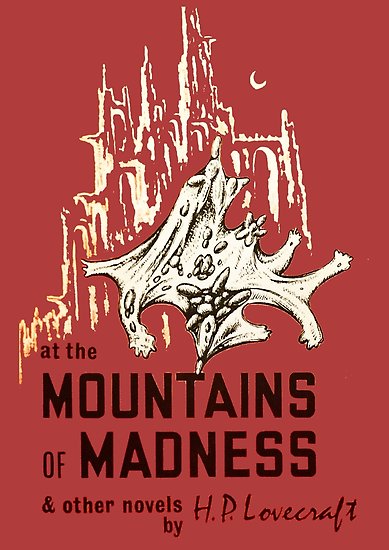
1) Dark fantasy in the style of Forgotten Realms novels, with some parallels to A Song of Ice and Fire, and Lord of the Rings. Here, I wanted to celebrate my love of fantasy while focusing on the things that are both thrilling and frightening about those worlds.
2) Paranormal horror in the style of Bram Stokers “Dracula”. A homage to an older genre of horror which embraced the Victorian Era. .
3) High adventure story in the style of Treasure Island, or Pirates of the Caribbean. Fearless travelers of the seas, in chaotic circumstances as they seek their fortune. Even these stories represent the turmoils found in places far off the edge of the earth.
4) Modern/cosmic horror in the style of Stephen King, Lovecraft and similar authors. A world where everyday life, or scientific enlightenment and curiosity comes face-to-face with ancient, and unfathomable horrors unheard of in this world.
An extremely important factor to me was being able to tell that story with a protagonist whose race, gender, and background is not specified. I also wanted to have each major scenario encapsulated by an (at least somewhat more) equal gender ratio. I didn’t want the story to be specific to one audience, as stories like this should be accessible to anyone.
A Disclaimer on my Narrative Choices
Some might judge certain selections of scenarios as less inclusive to a broader audience. This may include the euro-centric setting of medieval fantasy, or the classist environment of the Victorian Era, or the notion of Lovecraft as an inspiration point given a history of racism.
I’ve often been part of intellectual discussions about whether these settings can be expanded for larger audiences, or whether the reputation of an artist can truly be separated from their work.
I believe one can at least draw a sanitized inspiration from these environments and sources. To me, the true sin is to proceed without any acknowledgement to the conflict to inclusivity that these elements provide. I’ve made it my goal to keep this in mind as I continue to write the story, as I’ve chosen for it to be important to me.
A Place Where My Nostalgia Can Live
Somewhere between all of these influences, I realized that I was nostalgic for stories which tossed a lone youth into a complex world of sci-fi. Its a trope which is overdone in past media, but perfect for an interactive fiction novel, where the reader can branch into multiple scenarios and experience things for themselves.
It is a familiar, and reminiscent space to pour my creative writing into, while also exercising my technical abilities for scripting and media story design. A delightful distraction from the knot that built up during my primary project.
While many people may debate whether platforms like Twine or otherwise are really worth a writers time, I think interactive fiction is a place that satisfies the continual questions of “what if”, and can provide readers at least some level of agency as they embark upon their journey. So many readers are not even aware of the possibilities that interactive fiction can create; an accessible space between a linear novel, and video game.
Pre-announcement of Release Date:
MYSTERIES OF THE OUTREALM.
Planned release of Act I: Late Summer 2019
Web-based, and for free on ChaoticanWriter.com
To learn more about Twine, visit http://twinery.org.
- Axolotls, Genies, and Kaiju; a Quick TTRPG Zine Roundup #2 - May 19, 2025
- d100 City Encounters and Urban Sidequests - April 26, 2025
- Dirtbags! a Sci-Fi Shooter RPG: Gameplay Review! - March 23, 2025


